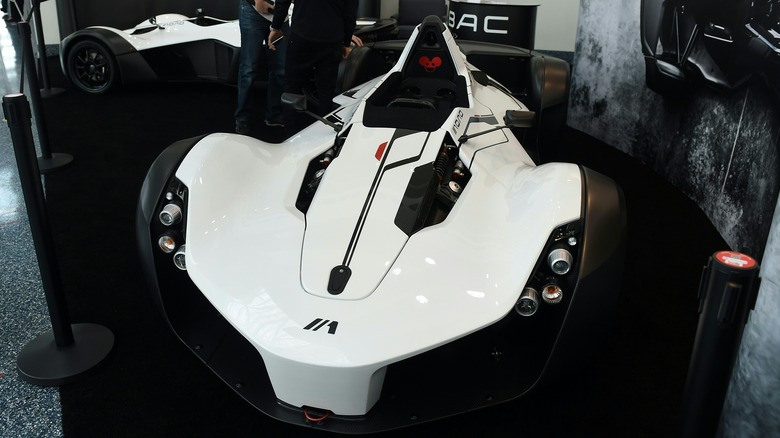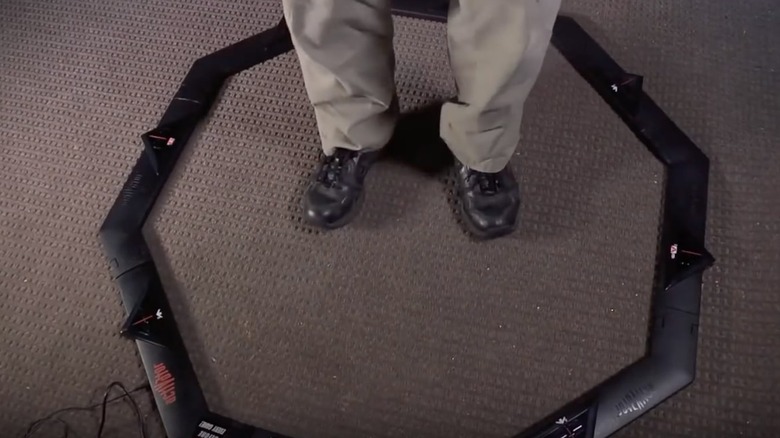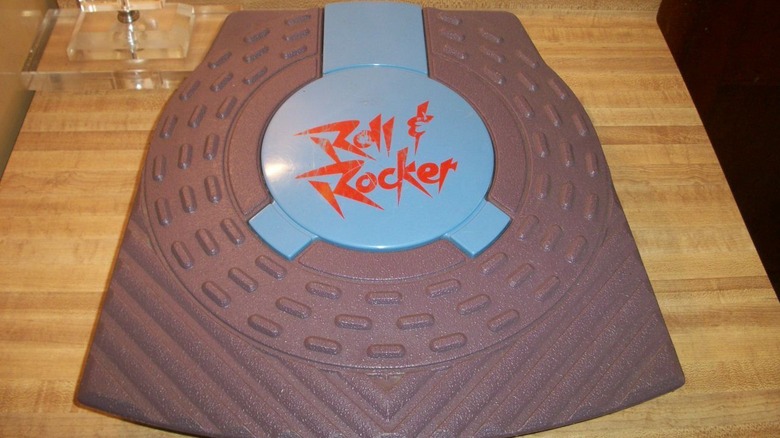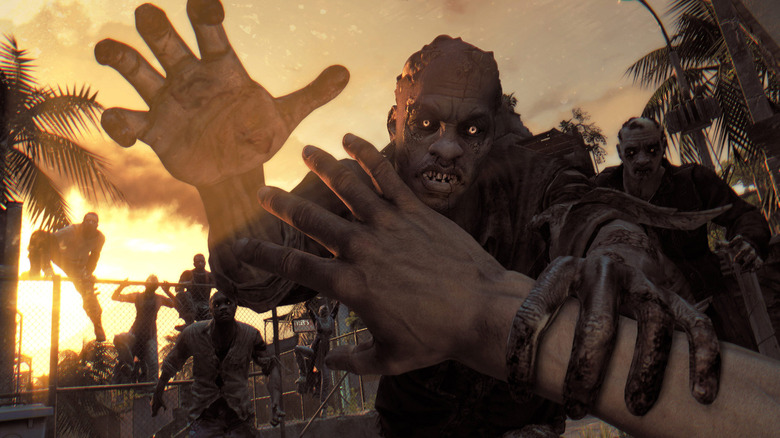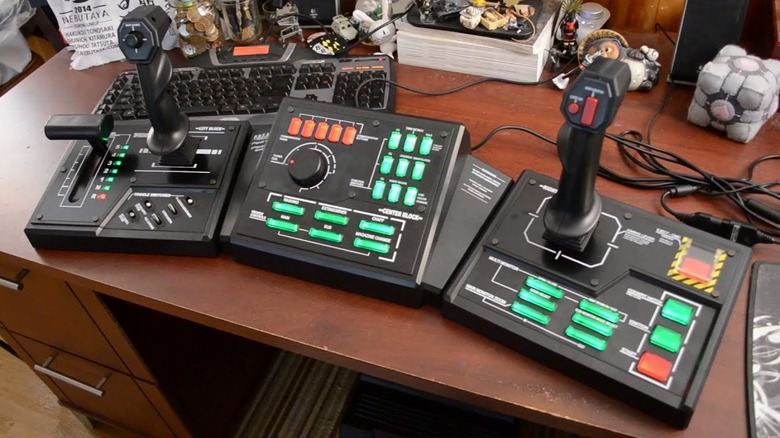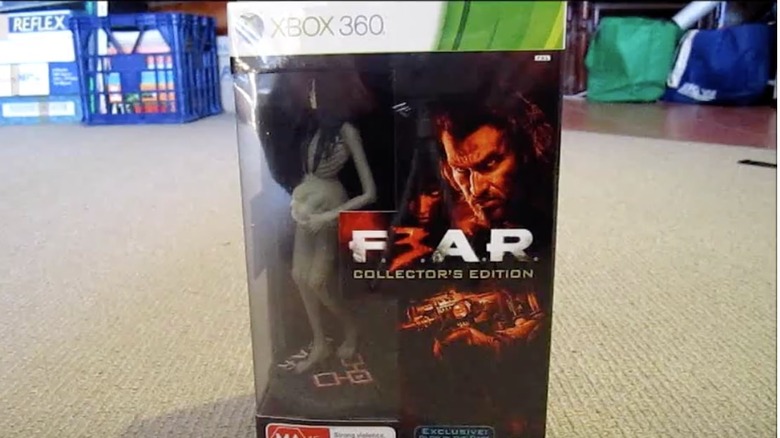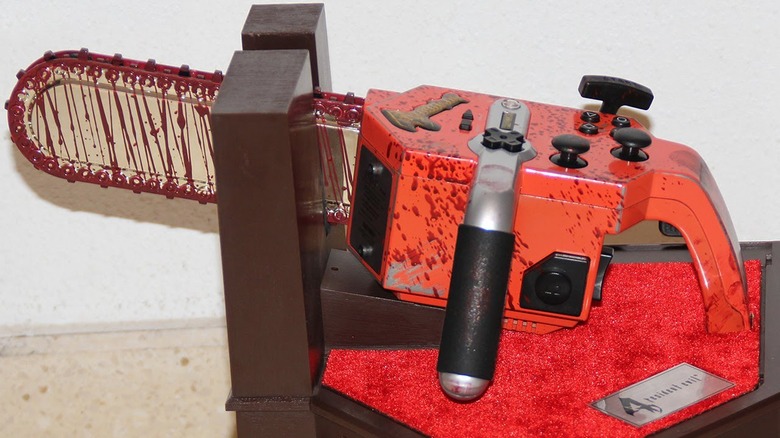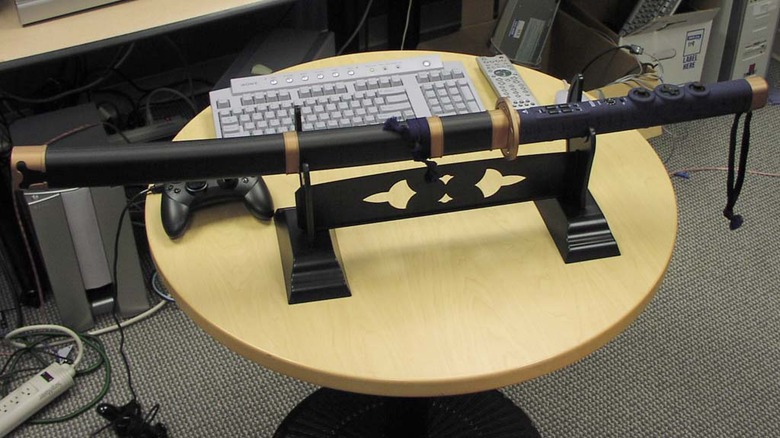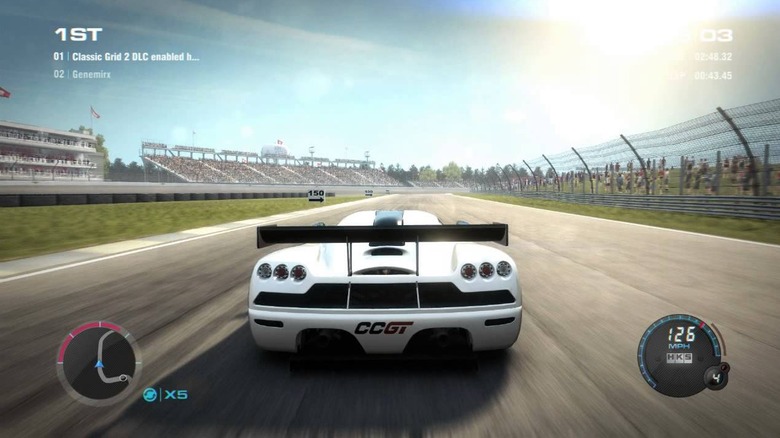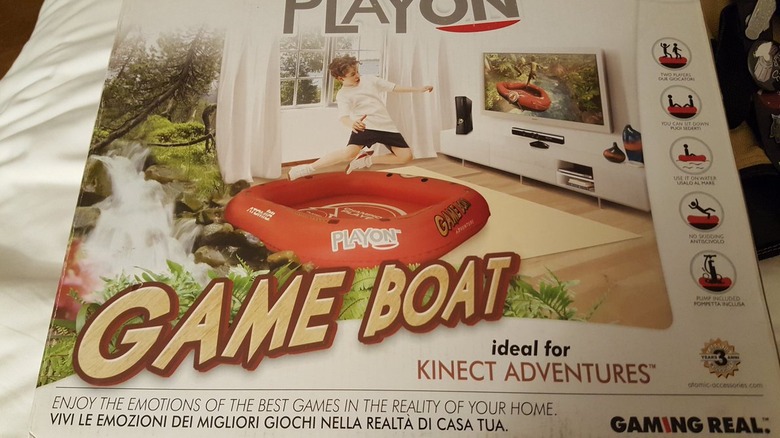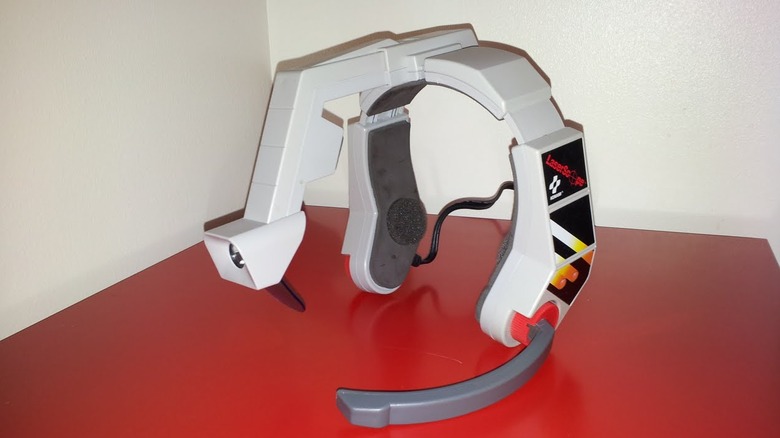The Craziest Things Video Games Have Tried To Charge Money For
Video games, as art, offer so much to so many. For creators and developers, the medium gives them the opportunity to create new worlds, find clever ways to expand on genres, and showcase their talents through something tangible and playable. For gamers, they can act as an escape, a way to jump into unfamiliar lands or embody characters that look, talk, or act differently than themselves.
But for the companies publishing and developing them, video games are, at the end of the day, a way to make boatloads of money. It's an expensive medium, after all, and companies need to see solid return on investment. So, it should come as no surprise to anyone that the businesses behind these games find ways to take money out of consumers' hands whenever possible.
Often times, publishers will find weird, useless, or absurdly expensive ways to get people to spend their hard-earned paychecks. Whether it's through collector's editions or peripherals, you don't have to look far to find some downright strange gaming cash grabs. Here are some of the craziest things that games have tried to charge money for.
Sega Activator was early, and terrible, motion control
Before collector's editions became a mainstream part of the gaming industry, companies used peripherals and accessories when they wanted additional revenue streams outside of actual games. While Nintendo famously utilized R.O.B. the Robot to help sell NES consoles, Sega also found its own gimmicks that would, in theory, help boost sales.
In 1993, Sega and a company called Interactive Light teamed up to create the Activator, an octagon-shaped ring that players would stand in the middle of to control various Genesis games with their body movements. The unique technology, based on musician Assaf Gurner's Light Harp, emitted infrared beams up at the ceiling. When a player's movement would break a certain beam, it would result in an in-game action based on the controller input assigned to one of the Activator's eight sections.
Despite being marketed as a device that allowed for accurate, free-range motion, the Activator didn't work all that well. Developers only programmed three games — Mortal Kombat, Comix Zone, and Eternal Champions — with the device in mind, and the lack of developer support made its $80 price tag even more outrageous. While it was quickly discontinued, it was still a defining moment in gaming history. The Activator was the first full-body motion controller. While younger gaming enthusiasts probably think that title would belong to the Kinect, Sega beat Microsoft to the punch by more than a decade.
Roll 'n Rocker let you play games with your feet
Those familiar with Nintendo games in the '80s and early '90s are no doubt familiar with LJN. The company's claim to fame was its consistent run of bad video games, including Back to the Future, Friday the 13th, and The Karate Kid. While LJN's main focus was on toy lines and games based on movie franchises, the company also worked on a particular NES controller that, to this day, is one of the most ridiculous peripherals to ever hit the market.
The Roll 'n Rocker, released in 1989, was a plastic tilt table that acted as a substitute for the NES controller's D-Pad. Players would stand on this strange hunk of plastic and tilt it in various directions to control in-game movements. While it was designed as a way for gamers to get off their sofas, it was nothing more than an expensive gimmick. In fact, it wasn't even a full substitute for a standard controller. Players would still have to plug an NES controller into the Roll 'n Rocker so that they could utilize the "A" and "B" buttons.
Resident Evil 6 let you dress like Leon
It's become extremely common, almost a requirement, for major AAA video games to have multiple editions upon release. Some offer versions with small upgrades like free DLC or a steelbook case. Others go bigger, offering figures or statues. In the case of Capcom, the company gave players a chance to purchase a certain protagonist's iconic leather jacket.
In 2012, Capcom announced the Leather Jacket Edition of Resident Evil 6. Available exclusively through the publisher's website, this edition came with a copy of the game, four RE6 tablet covers, and a replica of Leon Kennedy's leather jacket. Made of high-quality cowhide leather, this jacket was an authentic representation of the stylish attire Leon wore in the game. If you wanted to look and feel like the character you were controlling, this was your chance. And it all could have been yours for the low, low price of $1,300.
Dying Light prepared you for the real zombie apocalypse
After a stellar United States launch, the zombie action title Dying Light saw a UK launch just a few weeks later. To build up hype for the overseas launch, publisher Techland partnered with British retailer Game to offer a special collector's edition. Known as the My Apocalypse Edition, this very limited edition — only one was available — gave a lucky customer a custom-built zombie-proof shelter, survival parkour lessons, and night vision goggles.
Along with the practical, survival-focused aspects of it, it also came with the ability to have your face put in the game, a party at Techland, four copies of the game, headphones, and even adult diapers. All of this cost just 250,000 pound sterling, or $387,000. You might turn your nose up at such a crazy price tag, but one thing's for certain: one day, the zombie apocalypse will happen and a certain Dying Light fan will be much more prepared than the rest of us.
Steel Battalion went the extra mile for mech simulation
Throughout the Wii and Wii U lifecycles, Nintendo offered a lot of video game and controller bundles. Whether it was the special edition of Twilight Princess that came with a gold Wiimote or the Mario Kart 8 bundle that included a Mario-themed remote and steering wheel, Nintendo offered no shortage of controller-centric packages. However, Nintendo didn't force customers into to purchasing those expensive controller bundles just to have access to the games.
In 2002, four years before the Wii released, Microsoft subjected gamers to that type of bundle in order to play Steel Battalion for the original Xbox. The in-depth mech simulator came packaged with a 40-button, three-pedal controller that was required to play the game. This behemoth of a peripheral pushed the game's price tag up to more than three times the standard cost of a AAA title. At $200, Steel Battalion had quite a high cost of entry, especially when you consider that its controller only worked with one other game, its own sequel Steel Battalion: Line of Contact.
F.E.A.R. 3's Alma was pregnant and IN YOUR HOUSE
F.E.A.R. is a series that the industry hasn't heard from in a few years. In fact, the last main installment in the series was 2011's F.E.A.R. 3, developed by Day 1 Studios. A few months before the game's release, publisher WB Games announced a special collector's version. Mostly, the package included the usual collector's edition fodder: a steelbook case, an exclusive piece of DLC, and a comic tie-in from DC Comics.
However, all of that paled in comparison to the special edition's main attraction. The package included a statue of the series' telepathic antagonist Alma Wade, naked and pregnant. By far one of the most unusual figures in a video game collector's edition, Alma's belly would actually glow green when you turned out the lights. While the F.E.A.R. brand likely isn't at the forefront of most gamers' minds in 2019, there are surely some people who think about it in their sleep. That Alma figure is nightmare fuel, after all.
Resident Evil 4 had both the worst chainsaw and worst controller -- in one
The days of the Sega Activator and Roll 'n Rocker had long passed by the time Capcom released Resident Evil 4 to critical acclaim. However, that didn't stop the publisher from teaming up with hardware manufacturer Nuby Tech to create an odd peripheral for its most diehard fans. The special RE4 GameCube controller, modeled after the blood-spattered chainsaw utilized by the game's "Chainsaw Man" character, was 100 percent usable for Resident Evil and any other title on the Nintendo console.
The controller featured a two-handled design which gave it the look of a real, albeit scaled down, chainsaw. Each controller had a unique blood-spatter pattern, ensuring that no two customers had the exact same design. Unfortunately, the fantastic model didn't make for the most functional peripheral. While the majority of buttons were mapped to the face of the chainsaw, the L and R buttons were positioned on each handle, while the Z button was placed underneath the groove of the face. Yes, gamers could play with it, but the positioning made it impossible to access all buttons comfortably. But for $49.99, it was a unique conversation piece for those Resident Evil fanatics and collectors.
The biggest weapon in Onimusha 3: Demon Siege
Most people recognize the manufacturer Hori for its professional-grade arcade sticks, but 2004 saw the long-standing Japanese company release a much different peripheral. In conjunction with Capcom's release of Onimusha 3: Demon Siege, Hori created a katana controller that hit both the Japan and United States markets. Modeled after the Japanese sword, this three-foot-long controller came complete with its own sheath, making for one of the most unique collectable peripherals available.
Thanks to its internal motion sensor, swinging the katana acted as the attack button in Onimusha 3. This allowed players to feel like they were truly brandishing a sword, if they chose to do so. Players could even remove the blade and just use the handle, achieving the same motion-controlled results. It also featured all four PlayStation 2 face buttons, in case sword wielders weren't interested in moving too much.
Leave it to a top-tier manufacturer like Hori to create a feature-rich controller modeled after a katana. However, as interesting as this controller was, it was definitely made for the serious collector. Its $150 price tag made that clear.
GRID 2 was a great racer ... literally
For a young racing game series like GRID, publisher Codemasters had to make a splash to help sell this series and break into a market saturated with Forza and Gran Turismo games. In 2013, on the brink of GRID 2's release, the company jumped into the deep end and made that splash when it announced the game's Mono Edition. Along with a copy of the game, this edition — limited to a single copy — included a PlayStation 3, a tour of the BAC Mono racing factory, a professional-grade racing helmet, and a racing suit. Oh, and it also came with a 280-horsepower BAC Mono race car.
Seriously, it came with a working race car. For $190,000, a lucky gamer could race both digital and real-world roads thanks to this package. However, as it turns out, a popular electronic music producer dashed the hopes of any GRID fans looking to drop the cost of a small house on the Mono Edition. In early 2014, Deadmau5 revealed that he was the lucky individual to take home the BAC Mono package. Apparently, being rich and famous has its perks.
The Game Boat was an actual (inflatable) boat
For arguably too long, Microsoft and the Xbox brand worked every angle to make the motion-controlled Kinect camera a part of consumers' gaming habits. While millions of units were sold between Kinect and its Xbox One sequel, the camera was ultimately canceled after a rocky few years. Kinect 2.0 suffered due to bad press surrounding its always-on technology, while Kinect never found its killer app to hook in serious gamers. Still, there were multiple third-party companies that supported both versions of the peripheral, electing to churn out games and accessories in order to cash in on the camera's hype.
Perhaps the most egregious example of this came from a company called Atomic. In 2010, Atomic created its "PlayOn" line of accessories for the Kinect, which included the completely useless Game Boat. Atomic designed this inflatable "controller" for players to use in conjunction with Kinect Adventures' raft minigame, allowing them to maneuver the in-game raft by moving left and right while standing in it.
It was unnecessary, took multiple minutes to inflate, had a rubbery odor and, according to reviews, barely worked. The best part about the Game Boat was the fact that it was inflatable and could actually float in the water, according to the box. Atomic created a video game peripheral that likely performed better for real-life rafting than video game rafting.
LaserScope did not make you feel like a commando
These days, video game fans know Konami for poor labor practices, pachinko machines, and its lack of respect for Hideo Kojima. However, back in 1991, the Japanese gaming company was known for its NES peripheral, the LaserScope. Essentially a hands-free alternative to the popular NES Zapper, the LaserScope was a head-mounted light gun that included a microphone and an audio cable that plugged into the console. Gamers would look through the headset's crosshairs, aim at in-game targets, and say "Fire!" to shoot.
Originally designed for Konami's Laser Invasion, players could utilize the LaserScope with any NES titles that supported the Zapper. However, it's unique design and compatibility with multiple games didn't make up for its poor performance. Gamers panned the peripheral for its lack of accuracy and the fact that it would fire whenever the microphone picked up any sound in the room. Even the peripheral doubling as a pair of headphones for the console was sullied by its uncomfortable, hard plastic material. Today, the LaserScope is rarely talked about fondly, while its handheld counterpart, the NES Zapper, continues to live on in gaming's lexicon.

